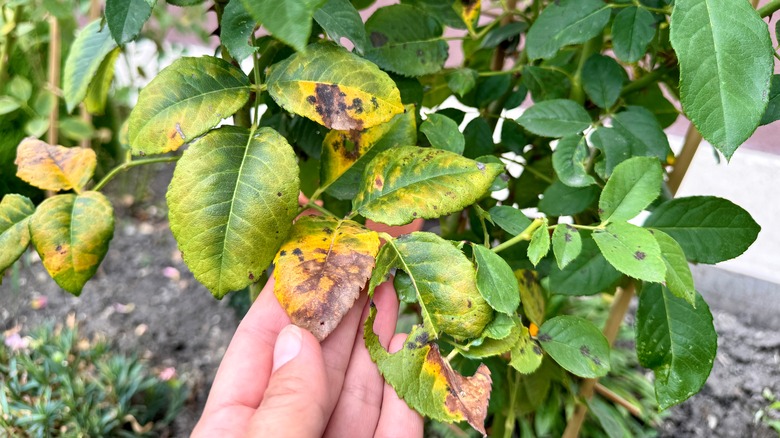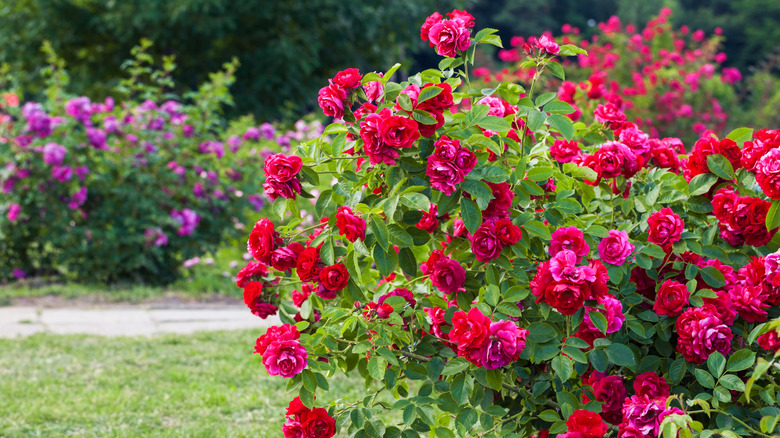The Essential Fall Task That Protects Rose Bushes From Black Spot In Winter
Nothing takes the peace and relaxation out of stopping to smell the roses quite like an unsightly fungal disease. Rose bushes (Rosa), even those that claim to be resistant, often suffer from black spot — a lethal disease that could be lurking in your rose garden. Black spot is caused by the fungus Diplocarpon rosae and, as the name implies, appears as black or dark purple spots on the leaves of rose bushes. When left unchecked, this disease will weaken your rose bush, leading to fallen leaves, fewer flowers, and the potential for other diseases to develop and thrive over time.
Black spot overwinters in the leaves and stems of your bush, lying in wait until the warm, wet spring conditions allow it to spread and flourish with ease. With that in mind, addressing the issue in the fall before your bushes are covered in snow is crucial. Luckily, picking up affected leaves that have fallen to the ground and disposing of them is an easy fall task that makes a big difference.
Keep rose bushes healthy by picking up fallen leaves
Disease is one of the factors that make roses such difficult plants to grow in your garden. But with a little extra effort, you can keep diseases like black spot at bay. Picking up fallen, diseased leaves in the autumn means they won't be on the ground come spring, when wind and bouncing rainwater can spread the fungal spores to other parts of your rose bush.
For leaves that have not yet fallen but do show signs of disease (either black spots, rust, or powdery mildew), prune these off and dispose of them in a plastic garbage bag. Afterwards, sanitize your pruning shears to avoid spreading diseases to your other plants. Alternatively, you can attempt to treat black spot with fungicides, though this is not always advised since these products can negatively impact the soil and surrounding environment. Instead, you can attempt to save your roses from harmful black spot disease with a common kitchen ingredient.

